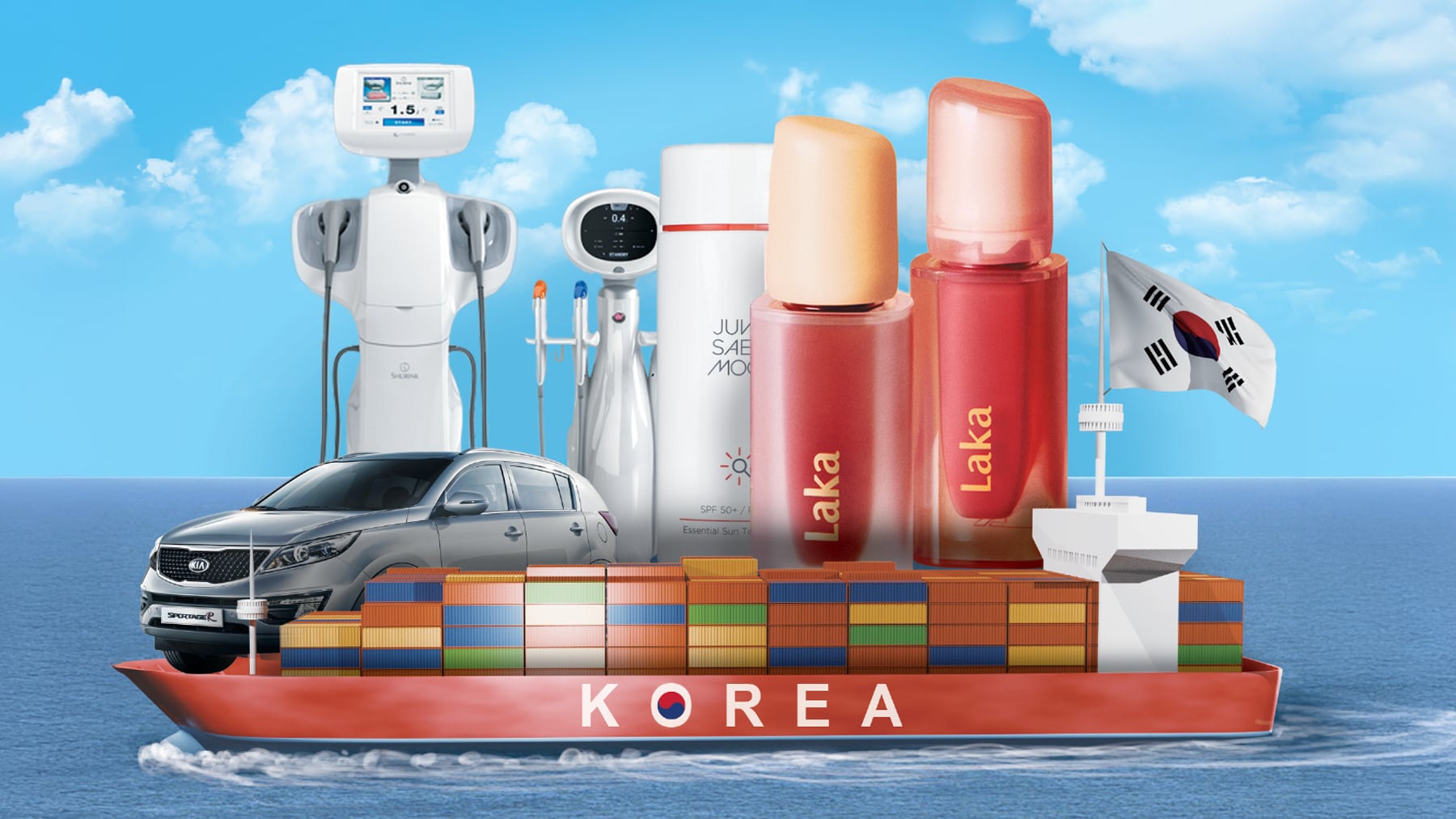
As South Korea’s industry transforms, smaller businesses are shifting from being mere suppliers of auto parts and raw materials to dominating international markets with products like cosmetics, medical devices, and semiconductor gear.
In 2010, South Korean small and medium-sized enterprises (SMEs) were heavily reliant on exporting auto parts. Numerous companies provided components to foreign facilities run by Hyundai Motor and Kia Motors Corporation, whereas lower-tier suppliers catered to various international automobile manufacturers.
Other major exports consisted of synthetic resins utilized in plastic bumpers and woven fabrics for garments—primarily components integrated into finished goods produced by big companies operating manufacturing plants abroad.
In recent five to six years, a transformation has occurred. An examination conducted jointly by The Chosun Daily and the Ministry of SMEs and Startups into SME export patterns from 2010 through 2024 reveals substantial changes in leading exported goods.
Leading this change is the cosmetic industry.
In 2015, cosmetics made their debut in the SME export rankings, securing the seventh spot. From there, they consistently moved upwards and achieved the top rank in 2022. They continued to hold this leading position through 2023 as well.
Significantly, this growth hasn't come from large corporations like Amorepacific or LG Household & Health Care, but rather from niche players such as Jung Saem Mool Beauty and TS Trillion. These smaller entities have established their presence, becoming key drivers of the worldwide surge in Korean beauty products.
The ascent of cosmetics in export rankings isn’t the sole trend. Other high-value-added goods like semiconductor production machinery and electronics utilized in battery technology and healthcare are also seeing an increase.
This represents a significant move away from the conventional subcontracting export approach, wherein small and medium-sized enterprises functioned within larger corporate groups, towards an environment where these SMEs are establishing their own brands and penetrating international markets using their distinct technological capabilities.
In 2024, South Korea's small and medium-sized enterprises (SMEs) exported around $6.84 billion worth of cosmetics, constituting roughly 67% of the nation’s overall cosmetics exports totaling $10.2 billion. This trend shows increasing growth, with cosmetics being the top-exported product for SMEs for an uninterrupted period of 25 months starting from February 2023.
With the global expansion of Korean popular culture, including phenomena like K-pop and K-dramas, there has been an increase in worldwide fascination with Korean beauty products. This surge in international curiosity means many foreign buyers view these items as delivering superior quality components without exorbitant pricing, thus driving up their popularity even more.
The growth of online distribution channels has been equally important. Roughly 15 years back, many small and medium-sized enterprises (SMEs) that could manufacture completed goods faced challenges such as poor brand visibility and restricted marketing resources. Consequently, they frequently had little choice but to act as suppliers to bigger companies.
However, by 2024, out of the 8,989 small and medium-sized enterprises (SMEs) exporting cosmetics, approximately 1,339—or about 14.9%—did so solely via online platforms.
The expansion of online shopping platforms allows small and medium-sized enterprises (SMEs) to reach international customers directly, bypassing the necessity for brick-and-mortar stores. Provided that the products maintain high quality, these businesses have the opportunity to succeed internationally on their own merits.
This change in exports from small and medium-sized enterprises mirrors larger transformations within South Korea’s manufacturing sector. Products that were once prominent because of their role as subcontractors have progressively lost significance, whereas goods linked to cutting-edge technologies have risen in importance.
For example, synthetic resin, which ranked second in 2010, dropped to sixth in 2024. Knitted fabrics and steel plates, ranked sixth and seventh respectively in 2010, fell out of the top 10 entirely.
Replacing them are electronic application devices and semiconductor manufacturing equipment. After breaking into the top 10 in 2016, these electronic application devices—including battery testers, dermatological medical instruments for beauty treatments, and high-precision industrial machinery—have experienced steady expansion. By 2024, driven by the surge in Korean beauty trends across Japan, there was a significant increase in demand for skincare-focused medical tools such as RF anti-wrinkle devices and lasers used for treating acne.
The semiconductor fabrication gear that entered the top 10 list in 2018 has become a significant source of contribution. These tools, essential for the process of making chips, are shipped not just to international facilities run by Samsung Electronics and SK Hynix but also to numerous semiconductor companies spanning both the United States and Europe.
Geopolitical changes have significantly influenced recent exporting trends, notably within the automotive industry. In 2024, used cars surprisingly rose to become the second-most exported product category for small and medium-sized enterprises (SMEs).
This increase was fueled by a scarcity of vehicles in Russia and adjacent nations after the invasion of Ukraine. Taking advantage of this situation, South Korean small and medium-sized enterprises rapidly escalated their exports to nearby markets like Kazakhstan, Kyrgyzstan, and Uzbekistan.
Looking forward, potential risks still persist. The resurgence of the Trump administration in the U.S. could lead to an escalation of global trade tensions again.
Roughly 32% of S. Korea’s SME exports are concentrated in the United States and China. If tariff battles or other trade barriers intensify, they could pose significant challenges to sustaining current growth trends.